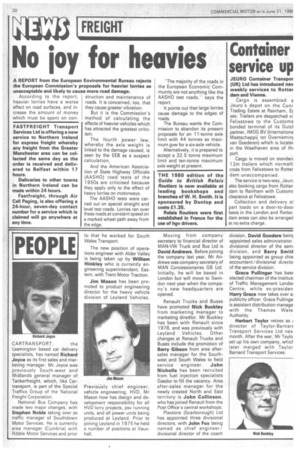No by for heavies
Page 22

If you've noticed an error in this article please click here to report it so we can fix it.
A REPORT from the European Environmental Bureau rejects the European Commission's proposals for heavier lorries as unacceptable and likely to cause more road damage.
According to the report, heavier lorries have a worse effect on road surfaces, and increase the amount of money which must be spent on con struction and maintenance of roads. It is concerned, too, that they cause greater vibration.
But it is the Commission's method of calculating the effects of heavier vehicles which has attracted the greatest criticism.
The fourth power law, whereby the axle weight is linked to the damage caused, is seen by the FEB as a suspect ca I cu lation..
And the American Association of State Highway Officials (AASHO) road tests of the 1950s are criticised because they apply only to the effect of heavy lorries on motorways.
The AASHO tests were carried out on special straight and level test roads. Lorries ran over these roads at constant speed on a marked wheel path away from the edge. The majority of the roads in the European Economic Community are not anything like the AASHO test roads," says the report.
It points out that large lorries cause damage to the edges of roads.
The Bureau. wants the Commission to abandon its present proposals for an 11-tonne axle limit with 44 tonnes as maximum gvw for a six-axle vehicle.
Alternatively, it is prepared to accept a 32.5 tonne maximum limit and ten-tonne maximum axle weight at present.




























































































































